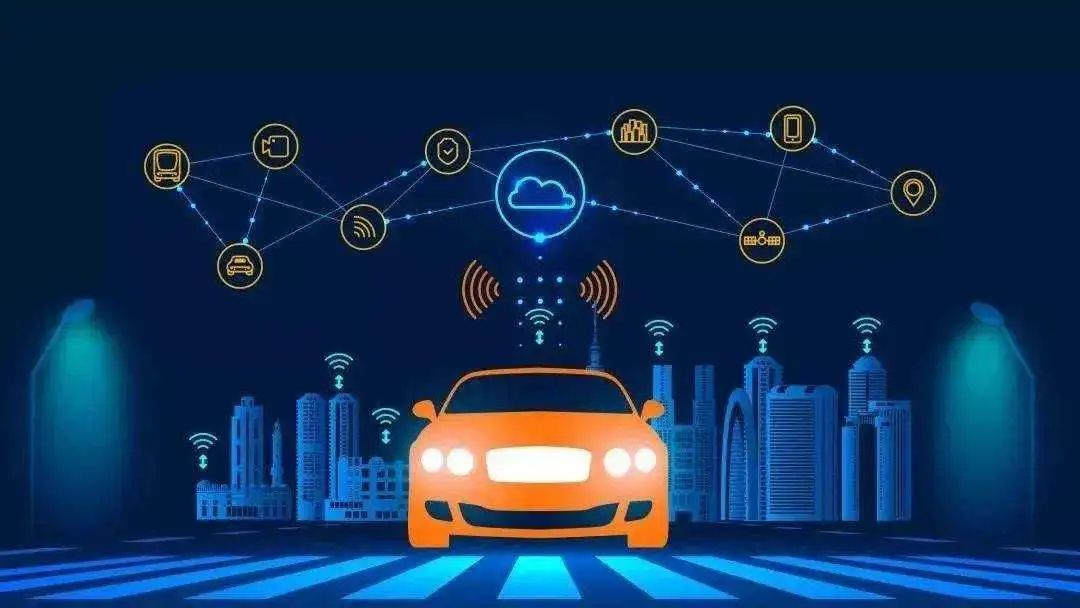Translation
Author: Shiyun Zhu
Editor: Lingfang Wang
“The pace of industrialization of autonomous driving and intelligent connected vehicles may exceed your expectations.”
On August 1st, Li Keqiang, Executive Director, Academician of the Chinese Academy of Engineering, Professor at Tsinghua University, and Chief Scientist of the National Intelligent Connected Vehicle Innovation Center, spoke at the 9th International Conference on Intelligent Connected Vehicles Technology (CICV2022).
In the global technological transformation of intelligent automobile represented by autonomous driving, the Chinese solution of intelligent connected vehicles is moving towards industrialization from top-level design. How quickly will it be implemented? What is the Chinese solution for intelligent connected vehicles? What changes will it bring to the intelligent transformation of the Chinese automobile industry?
The Installation Rate of Intelligent Connected Vehicle Systems Will Reach 75.9% by 2025.
How fast is the pace of industrialization of autonomous driving and intelligent connected vehicles?
Li Changqing, inspector of the Quality Development Bureau of the State Administration for Market Regulation, provided a set of data at the conference: In 2021, China’s intelligent connected automobile shipments reached 13.7 million vehicles, and it is expected that the installation rate of intelligent connected vehicle systems in China will reach 53.3% this year. By 2025, the installation rate will reach 75.9%, surpassing the global average level.

Guo Shougang, Deputy Director of the Equipment Industry Department of the Ministry of Industry and Information Technology (MIIT), also stated: In 2021, the market penetration rate of L2 level assisted driving passenger vehicles in China reached 23.5%, and it has been raised to 30% in the first half of this year. “Breakthroughs in innovative technologies such as new-generation electronic and electrical architecture and vehicle operating systems have achieved mass production applications for some products.”
Guo Shougang also stated, “Higher-level intelligent connected vehicles are being tested in specific and limited scenarios to carry out pilot testing of passenger and cargo transportation on a large scale.” The so-called “higher-level intelligent connected vehicle” refers to an L4 level product that can partially realize unmanned driving.
Gong Weijie, Deputy Director of the National Intelligent Connected Vehicle Innovation Center, stated at the conference that 17 national-level intelligent connected vehicle test demonstration areas supported by the Ministry of Industry and Information Technology, the Ministry of Public Security, and the Ministry of Transport have been established; nearly 30 provinces and cities have issued more than 1,000 intelligent connected vehicle road test and demonstration application licenses, with an opening road mileage of over 6,000 kilometers and a test mileage of over 10 million kilometers, forming “a very good intelligent connected vehicle testing and evaluation verification system, including closed venues and open road coordination.”
Currently, various testing areas and relevant institutions are working on promoting mutual recognition of test results.The landing of the technology roadmap is clearer, as Gong Weijie stated: “We can see that from the early stage of interconnection to industrialization promotion, as well as the fusion exploration of intelligence and Internet, the national test demonstration zones have established over 4,000 sets of infrastructure, and over 1.85 million 5G base stations have been opened. Each test area has been exploring basic maps and cloud control platforms. Car companies have also launched CV2X mass production models.”
China’s Solution for Vehicle-Road-Cloud Integration
As the terminal production and testing environment gradually improves, the Chinese solution is also gradually taking shape based on the top-level design.
As intelligent connected vehicles are data and information-driven, they have strong local and social attributes, meaning that products are based on local infrastructure and traffic characteristics, with strong local attributes, and are closely related to national information and data security with social attributes.
Therefore, “we cannot directly use foreign (technology, standards, systems) solutions. Each country has its own summarized solutions, so China also has its own Chinese solution.” Li Keqiang expressed that in the Chinese solution, map information data is the first attribute, and cross-technology and fusion technology are the basis.
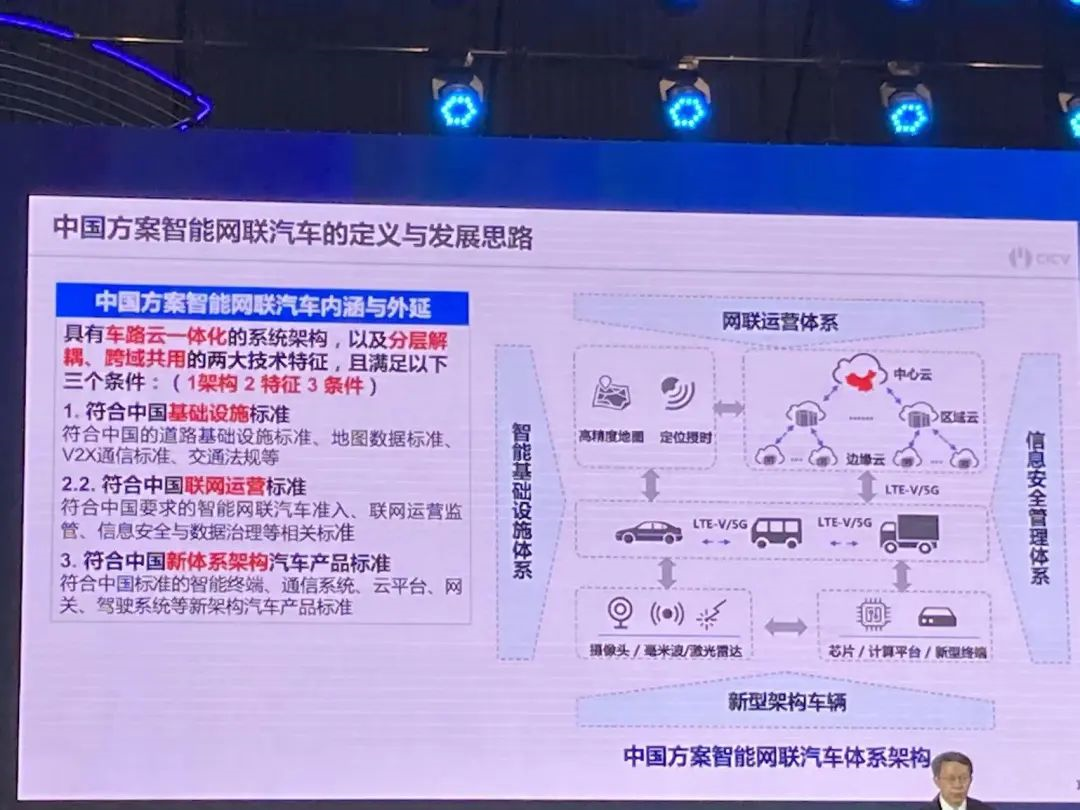
The Chinese solution for intelligent connected vehicles specifically refers to the vehicle-road-cloud integration of intelligent vehicles. It can be divided into two technical features: the architecture of vehicle-road-cloud integration with layered decoupling and cross-cloud sharing, which meets three categories of standards: traffic infrastructure, network operation, and new product based on a novel architecture.
“Under this architecture (vehicle-road-cloud integration), new types of components, namely the five major technology platforms, in addition to conventional parts, will also emerge for future intelligent connected vehicles.” Li Keqiang expressed: the five major technology platforms include computational technology, vehicle-end technology, cloud control, high-precision dynamic maps, and information security basic platforms. They have typical features: decoupling between the basic layer and the application layer; cross-cloud application at the basic level, open and shared; independent competition and development at the application layer.
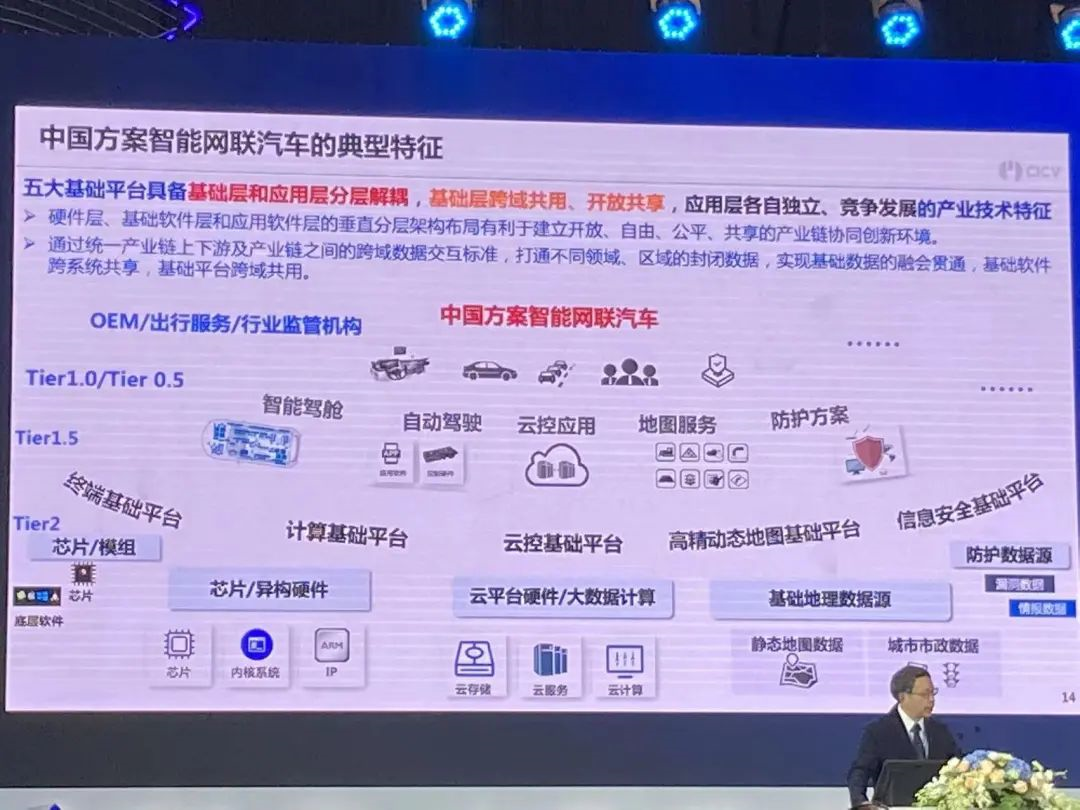
Li Keqiang stated that based on the five basic platforms, a new industrial chain architecture will be formed – the 1.5-tier supplier. The future terminal, computing, cloud, high-precision dynamic maps, information security, and the entire industry application can realize data interaction, supporting the coordinated development of the industry.
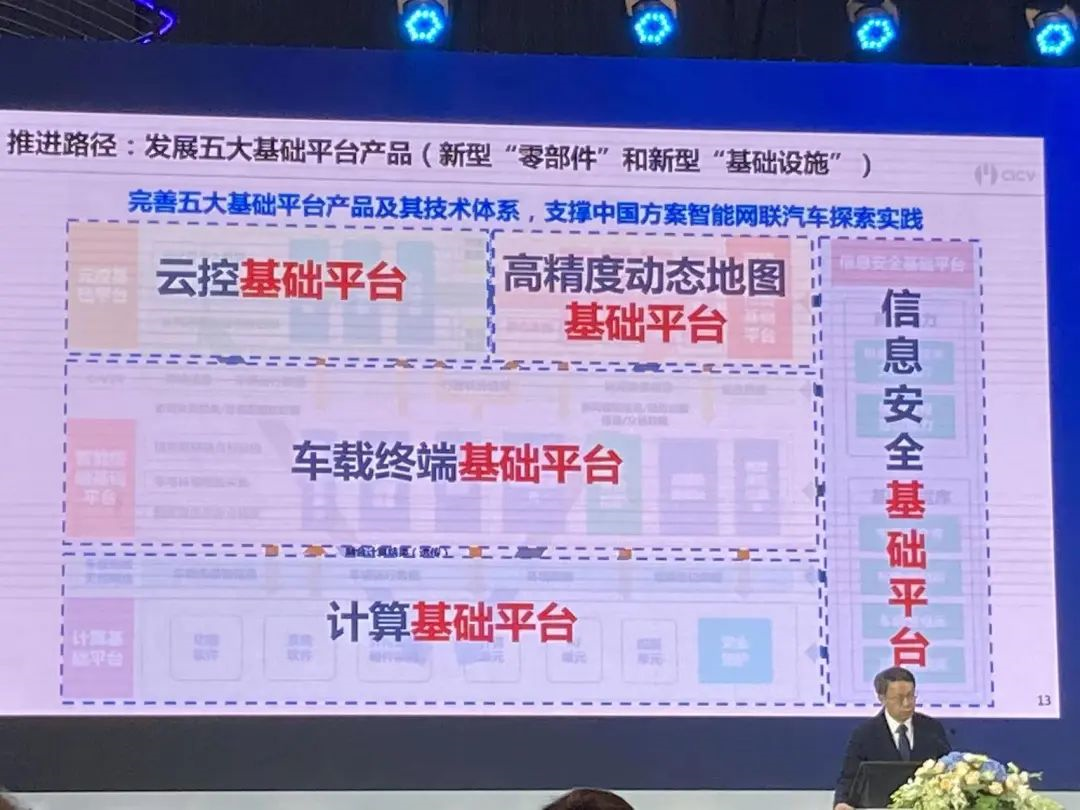
“How can the five major technology platforms promote the development of the entire industry? The ultimate goal is to reflect the social attributes of data governance and industry technology services integration.” Li Keqiang expressed.Promote the construction of information security basic platforms and serve the entire industry and national regulatory system;
Explore the role of geographic information security protection and high-precision dynamic map compliance and industry promotion based on the high-precision dynamic map basic platform;
Accelerate the construction of cloud technology infrastructure and achieve the trend of ensuring security and promoting industrial development.
Based on this, accelerate the platform and industrialization of intelligent terminal technology related to vehicle, enhance driving safety, and support the high-quality integration and sustainable development of vehicle-road-cloud.
Construction of 1.5 level supplier system under the five platforms
China’s intelligent automobile solution system supported by the five platforms of vehicle-road-cloud integration has taken shape.
The calculation-based platform and technology platform on the vehicle side will mainly be constructed by chip-level components and first-tier suppliers and OEMs, forming a calculation-based platform composed of distributed heterogeneous hardware + underlying operating system + engineering software + application software.
Li Keqiang stated that such a calculation platform architecture has begun to achieve industrialization. Both software and hardware components providers and OEMs have participated in the overall design of the architecture, functional software, middleware, virtualization modules, chips, and hardware.
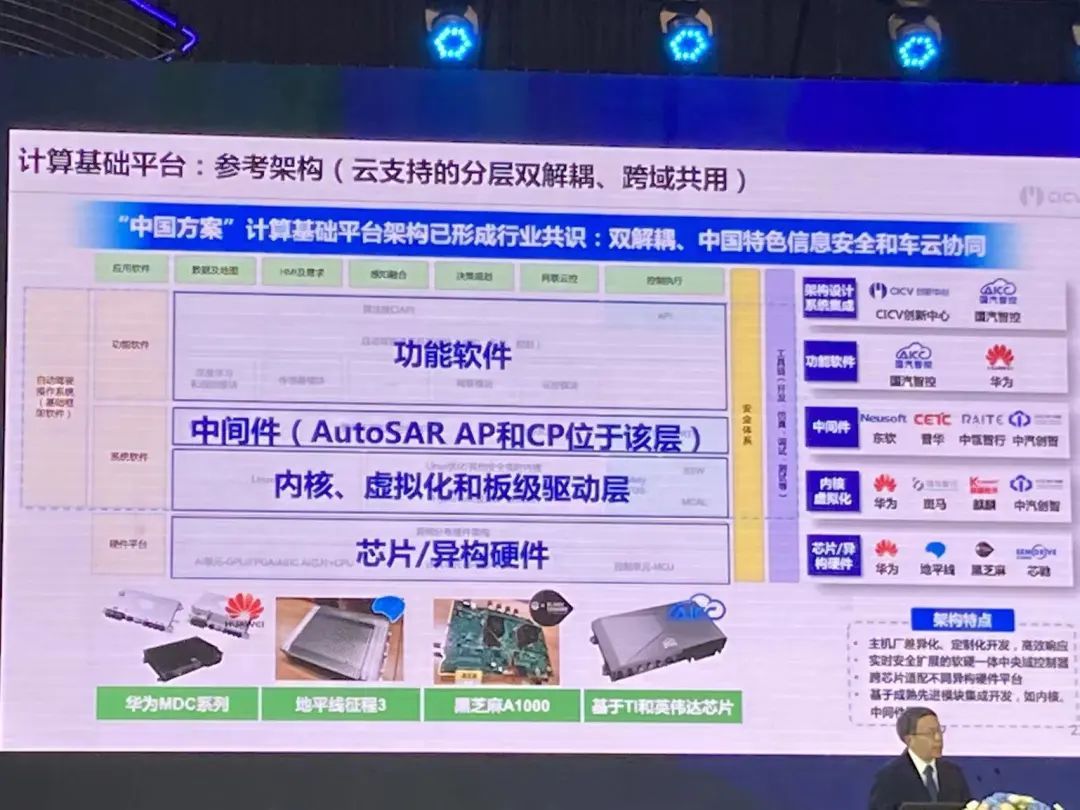
In the displayed chart, we can see that suppliers such as Huawei, Horizon, Baidu, Neusoft, and Guoqi Zhikong and four main OEMs, BYD, GAC, Changan, and Yutong have participated and carried out in Battlefield collaboration.
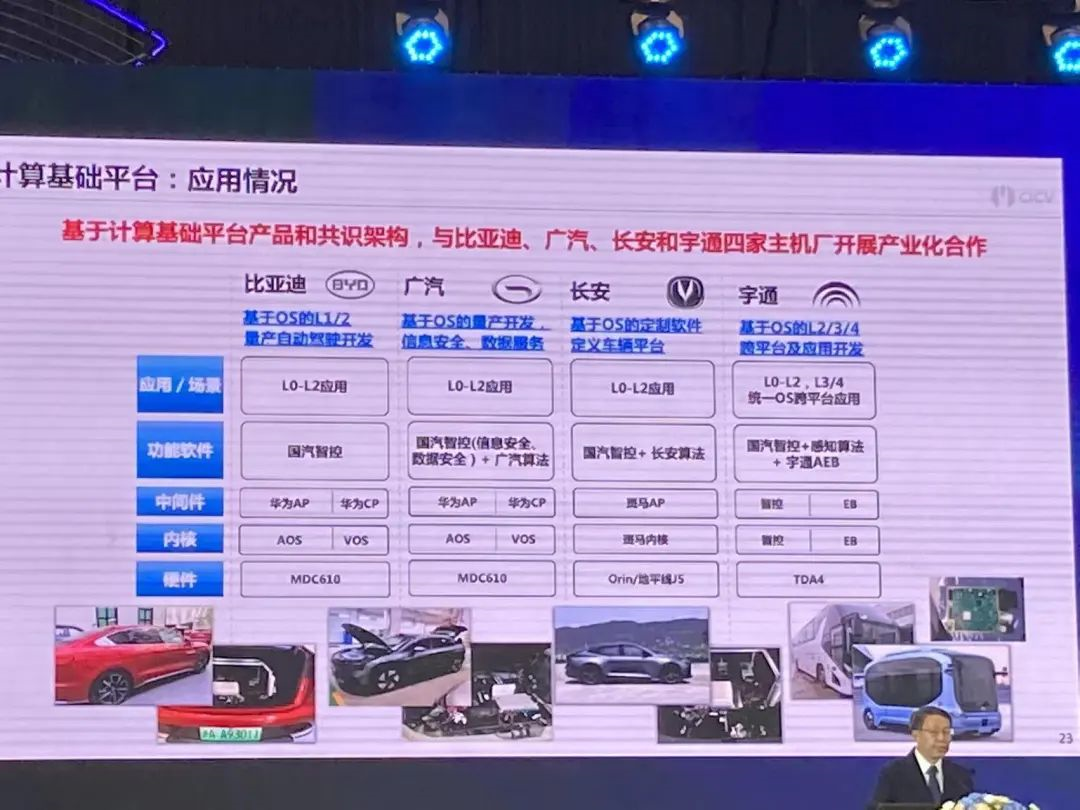
More collaborative enterprises, institutions, and government efforts are needed for the construction of cloud control, high-precision maps and information security basic platforms.
Li Keqiang stated that the cloud control basic platform can collect various standardized data to support industrialization applications through the collection of traditional data and the construction of intermediate support platforms. It forms a three-tier four-level cloud control system architecture, including terminals, edge clouds, regional clouds, center clouds, as well as basic layers, platform layers, and application layers, truly achieving intelligent networked vehicles’ safety, energy conservation, environmental protection, comfort, and data governance and service integration.
The cloud control basic platform is already demonstrating various scenarios, including digital twins for traffic management and safety and energy-saving for driving. In addition, demonstration applications are also underway in locations such as Beijing Yizhuang, Shanghai, and Changsha.
The high-precision dynamic map basic platform is mainly aimed at map data collection, gathering important dynamic data from various map companies and OEMs.
Usually, it is challenging for a single map company to integrate various OEMs’ data organically, dynamically, and in real-time. Through the platform, not only the underlying map can be crowdsourced, but more importantly, the aggregation of dynamic data can truly support the strong role of the dynamic sensor capabilities of the map.Currently, the high-precision dynamic map basic platform architecture is under construction.
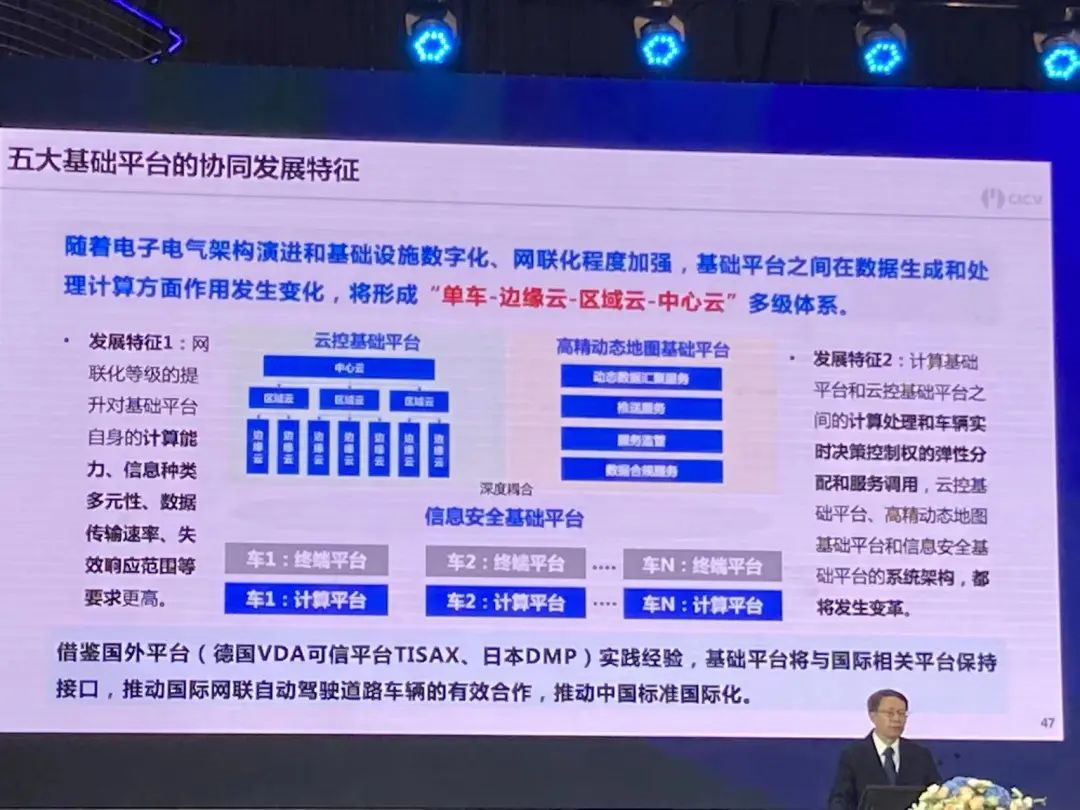
The intelligent in-vehicle terminal is a basic platform that integrates future multimode communication, multimode positioning, and intelligent gateway.
This platform supports the breakthrough of various enterprise application services through basic data aggregation, including hardware design, middleware and technical services, etc., on which a complete industrial ecosystem can be established. The birth of a new industry chain can better connect basic platforms such as chips with application platforms and play a good bridging role.
The information security platform is used to collect various data to achieve standardization and scenario applications. Currently, the platform architecture has been developed and completed, including data basic layer, core component layer, and application support layer. “Now through the construction of the demonstration area and cooperation with relevant automotive companies, including the rapid promotion of many application areas on the vehicle end, future road end, and cloud end.”
This article is a translation by ChatGPT of a Chinese report from 42HOW. If you have any questions about it, please email bd@42how.com.
